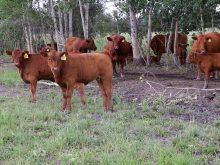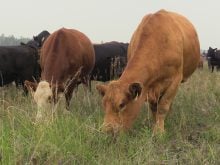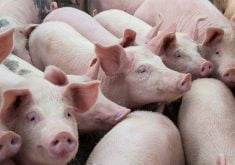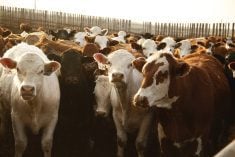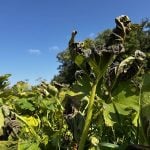EDMONTON – Ian and Verena Peden have been carrying the flag for Braunvieh cattle at Farmfair for 15 years.
The couple from Leduc, Alta., have owned Braunvieh since 1984 and have never tried to change the style or colour, said Verana Peden.
Her family owned the cattle in Switzerland, where they were milked and used for beef.
“I liked something different and I grew up with them. I talked my husband into it,” she said during a break at Farmfair, held Nov. 5-13 in Edmonton.
Read Also

Feeder market continues the climb
For the week ending Aug. 30, Western Canadian feeder cattle markets traded $4-8 per hundredweight higher on average.
They showed their string in the all other breeds category and won grand champion female with a 10-year-old cow.
The cattle are quiet and come in a range of grey-brown shades with the characteristic white ring around the muzzle. The bulls get darker with maturity.
“Braunvieh has chosen not to go black. We have to go back to the original Swiss seedstock. If it is not Swiss, it is not Braunvieh,” said fellow breeder Bruce Anderson.
Anderson and the Pedens have exported semen to the United States, Mexico and South America, where the cattle are more popular.
Peden said the breed carries a larger brisket, which acts as a heat dissipater in hotter climates.
A potential Mexican customer approached them during the sale looking for 10 females and two bulls.
Anderson, who ranches near Cowley, Alta., raises purebred and crossbred Braunvieh, mating them to Angus bulls.
“In 1972, a geneticist told us as far as crossbreeding goes, they have the best genetic pool for crossbreeding,” he said.
As a practising physician, he was also attracted to the claim of a genetic predisposition to produce more conjugated linoleic acid, a fatty acid associated with heart health.
To achieve the higher CLA levels, the Pedens and the Andersons finish their cattle on mostly grass with little or no grain.
“The cattle get minimum grain,” Peden said. “The calves get just grass and milk.
The calves are weaned at 700 pounds.
The cattle first came to the U.S. between 1869 and 1880 to form the basis of the American Brown Swiss dairy breed.
The first Brown Swiss bull selected solely for beef arrived in Canada in 1968 and formed the basis of the Braunvieh beef herds with 61 additional animals imported over the next 17 years.
The association changed its name to the Canadian Brown Swiss and Braunvieh Association in 1996 to identify the two phenotypes within the breed.



